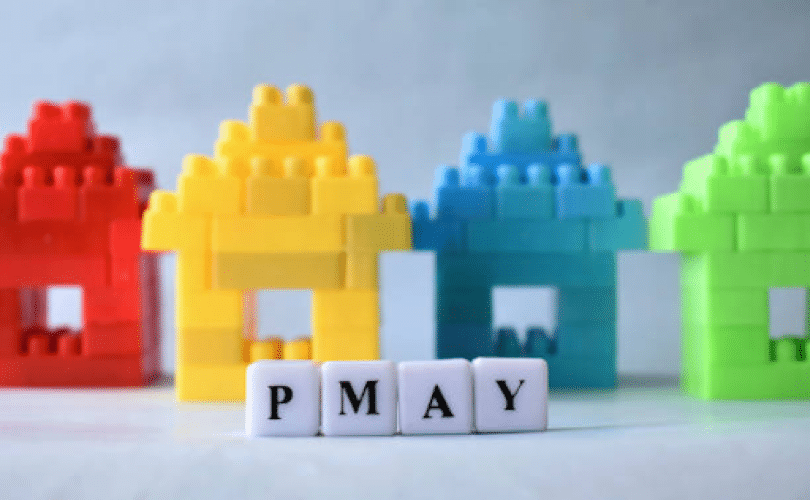Affordable Housing Initiatives for Urban Migrants

Urbanization and migration are closely linked phenomena that often lead to improved occupational, educational, and economic opportunities. In India, the Census of India conducts a population enumeration, including migration data, every ten years. The last census was conducted in 2011, and since then, the Ministry of Housing and Urban Affairs (MoHUA) has not maintained any specific data on migration trends. This lack of data presents challenges in addressing the housing needs of urban migrants, particularly those from economically weaker sections.
The Affordable Rental Housing Complexes (ARHC) Initiative
In response to the growing need for affordable housing, the MoHUA launched the Affordable Rental Housing Complexes (ARHCs) scheme in July 2020. This initiative is part of the Pradhan Mantri Awas Yojana – Urban (PMAY-U) and aims to provide dignified living conditions for urban migrants and the poor near their workplaces. The ARHC scheme operates through two distinct models.
Model 1 focuses on utilizing existing government-funded vacant houses constructed under the Jawaharlal Nehru National Urban Renewal Mission (JNNURM) and the Rajiv Awas Yojana (RAY). These vacant houses can be converted into ARHCs through Public-Private Partnerships (PPP) or by public agencies.
Model 2 involves the construction, operation, and maintenance of ARHCs by public or private entities on their own available vacant land. This model allows for greater flexibility and encourages private investment in affordable housing.
The implementation of these models aims to create a sustainable housing solution for urban migrants, ensuring they have access to safe and affordable living spaces.
State-wise Implementation of ARHCs
The ARHC initiative has seen varying levels of implementation across different states and Union Territories (UTs) in India. The scheme’s success can be measured by the number of ARHCs sanctioned and completed under both models. For instance, in Chandigarh, 2,195 vacant houses have been converted into ARHCs. Gujarat has also made significant strides, with cities like Surat, Ahmedabad, and Rajkot converting 393, 1,376, and 698 vacant houses, respectively.
In Rajasthan, 480 houses in Chittorgarh have been transformed into ARHCs, while Jammu and Kashmir have converted 336 houses in Jammu. Uttarakhand has also participated, with 100 houses in Lalkuan and 70 in Dehradun being repurposed. Overall, a total of 5,648 vacant houses have been converted into ARHCs across various states, showcasing the initiative’s potential to address housing shortages for urban migrants.
PMAY-U 2.0: Expanding Housing Opportunities
Building on the experiences from PMAY-U, the MoHUA has introduced PMAY-U 2.0, also known as the ‘Housing for All’ Mission, effective from September 1, 2024. This new phase aims to enhance housing availability in urban areas across the country. The initiative allows eligible beneficiaries to construct, purchase, or rent houses at affordable costs through four verticals: Beneficiary Led Construction (BLC), Affordable Housing in Partnership (AHP), Affordable Rental Housing (ARH), and the Interest Subsidy Scheme (ISS).
As of now, 29 states and UTs have signed Memorandums of Agreement (MoA) to implement PMAY-U 2.0. The initiative has already received in-principle approval for more than 600,000 houses. The guidelines for the scheme are accessible online, providing transparency and clarity for stakeholders involved.
The ARH vertical of PMAY-U 2.0 specifically targets the creation of rental housing for Economically Weaker Sections (EWS) and Lower Income Groups (LIG), including migrant workers. This vertical is implemented through two models similar to the ARHC initiative, focusing on converting existing government-funded vacant houses and constructing new rental housing by private or public entities.
A Step Towards Sustainable Urban Living
The initiatives launched by the MoHUA, including the ARHC and PMAY-U 2.0, represent significant steps toward addressing the housing needs of urban migrants and the economically disadvantaged. By leveraging existing resources and encouraging private investment, these programs aim to create a conducive environment for affordable rental housing. This approach not only helps prevent the growth of slum clusters in cities but also promotes a more inclusive urban landscape where all residents can thrive. The ongoing efforts reflect a commitment to improving living conditions for those who contribute to the urban economy, ensuring that everyone has access to safe and dignified housing.
Observer Voice is the one stop site for National, International news, Sports, Editor’s Choice, Art/culture contents, Quotes and much more. We also cover historical contents. Historical contents includes World History, Indian History, and what happened today. The website also covers Entertainment across the India and World.
Follow Us on Twitter, Instagram, Facebook, & LinkedIn

